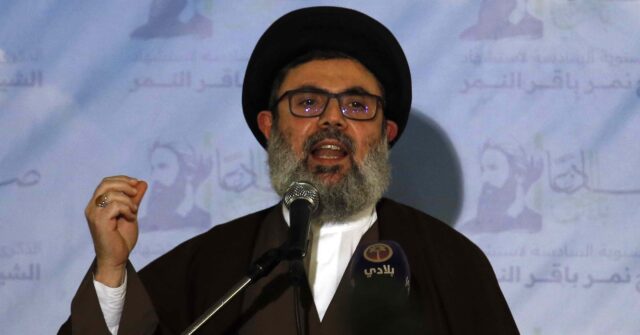On a recent Tuesday, the Israel Defense Forces (IDF) announced the successful elimination of Hashem Safieddine, a prominent leader within Hezbollah, alongside other key operatives, including Ali Hussein Hazima. This news confirmed weeks of speculation surrounding Safieddine’s fate following an airstrike conducted in early October, targeting Hezbollah’s intelligence headquarters in Dahieh, a central stronghold of the organization in Beirut, Lebanon. The IDF emphasized the precision of the airstrike, which was based on solid intelligence and carried out while minimizing civilian casualties, acknowledging that over 25 Hezbollah operatives were present during the attack, including significant figures involved in military planning and intelligence gathering.
Hashem Safieddine held a critical role within Hezbollah; he was a member of the Shura Council, the highest decision-making body in the group. His strong ties to Hassan Nasrallah, Hezbollah’s former leader and his cousin, positioned him as a key figure in the organization’s operations and strategies. During periods when Nasrallah was not present in Lebanon, Safieddine often filled in for him as the Secretary-General, highlighting his influential position within the group. His history includes orchestrating terrorist assaults against Israel and participating in major policy decisions, marking him as an indispensable asset to Hezbollah’s military apparatus.
The IDF’s confirmation of Safieddine’s and Hazima’s deaths reinforces its commitment to countering threats from Hezbollah, which is deemed a terrorist organization by Israel. Prime Minister Benjamin Netanyahu and Defense Minister Yoav Gallant indicated earlier that they believed Safieddine had been killed, but it wasn’t until the IDF’s official announcement that the implications of their recent military actions became clear. This ongoing military campaign against Hezbollah is part of a broader strategy to eliminate senior commanders and disrupt their operations to enhance the security of Israeli civilians.
In terms of military strategy, the precision strike underscores the IDF’s ability to conduct complex operations in densely populated urban environments. By targeting an underground facility used by Hezbollah for intelligence operations, the IDF aimed to dismantle the leadership and operational capacity of the group while striving to avoid collateral damage among civilians. The significant presence of over 25 operatives in the intelligence headquarters during the strike highlights the network of individuals supporting Hezbollah’s initiatives, indicating that the organization remains a complex and formidable presence in the region.
The elimination of prominent figures like Safieddine and Hazima may represent a shift in Hezbollah’s operational capabilities, but it also poses risks of retaliation or increased tensions in the region. Hezbollah has historically responded to such attacks with counterstrikes, and the IDF remains vigilant regarding potential escalations that might ensue from this operation. This delicate situation reflects the ongoing volatility of Middle Eastern geopolitics, where actions taken by one party can lead to significant repercussions for others involved, complicating an already fraught landscape.
In conclusion, the IDF’s operation against Hezbollah’s leadership signifies a continued focus on counter-terrorism and the protection of Israeli interests amidst a backdrop of persistent conflict and instability in the region. As the situation develops, both the IDF and Hezbollah will likely remain on high alert, with possible motivations for further actions emerging from this high-stakes environment. The international community watches closely, as the ramifications of these escalations could influence broader regional dynamics and security policies in the years to come.

